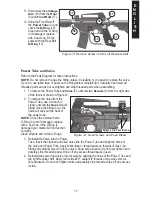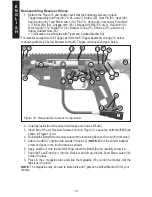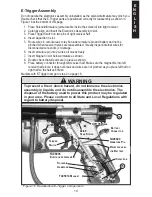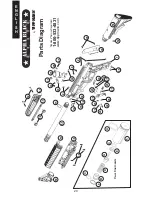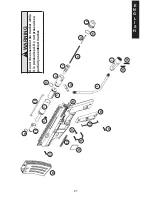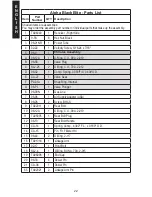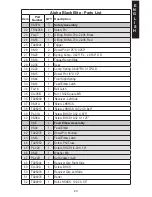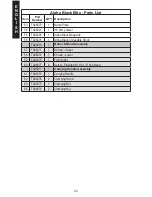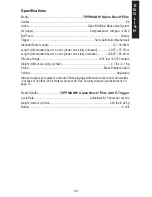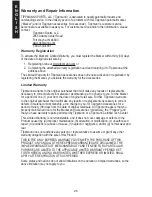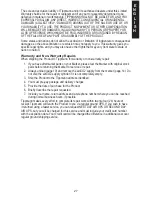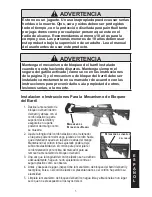
14
E
N
G
L
I
S
H
Air/CO2 Cylinder Safety Tips
SAFETY TIPS to ensure that your air or CO2 cylinder is safe for play:
• Improper use, filling, storage, or disposal of air or CO2 cylinder may result in
property damage, serious personal injury or death.
• Make sure that any maintenance or modification to any air or CO2 cylinder is done
by a qualified professional, such as a “C5” certified airsmith.
• Installing an anti-siphon device is dangerous. However, if one is already installed on
your air or CO2 cylinder or is desired, it is critical that your cylinder be checked by,
or the device installed by, a qualified professional.
• All air or CO2 cylinders must be filled only by properly trained personnel.
• Cylinder valves must be installed only by properly trained personnel.
• Do not overfill a cylinder! Never exceed the air or CO2 cylinder’s capacity.
• Do not expose pressurized air or CO2 cylinder to temperatures exceeding 130
degrees Fahrenheit (55 degrees Celsius).
• Do not use caustic cleaners or strippers on the air or CO2 cylinder or cylinder valve
and do not expose to corrosive materials.
• Do not modify the air or CO2 cylinder in any way. Never try to disassemble the
cylinder valve from the air or CO2 cylinder.
• Any air or CO2 cylinder that has been exposed to fire or heated to a temperature
of 250 degrees Fahrenheit (121 degrees Celsius) or more must be destroyed by
properly trained personnel.
• Use appropriate gas for your cylinder. Only use CO2 in a CO2 cylinder and only use
compressed air in a compressed air cylinder.
• Keep all cylinders out of the reach of children.
• The air or CO2 cylinder should be inspected and hydrostatically retested at least
every 5 years by a DOT licensed agency.
• Keep exposed skin away from escaping gas when installing or removing the air/CO2
cylinder, or if the marker or air/CO2 cylinder is leaking. Compressed air and CO2
gasses are very cold, and can cause frostbite under certain conditions.
NOTE
: Locate a “C5” certified airsmith at www.paintball-pti.com
Air/CO2 Cylinder Removal
1. Read
Air/CO2 Cylinder Warnings
(page 13) and
Air/CO2 Cylinder Safety Tips
(above) before beginning the cylinder removal process.
2. Eye protection designed for paintball use must be worn by the user and any person
within range.
3. Follow the
Unloading Your Marker
instructions on page 10.
4. Watch the marks on the cylinder and cylinder valve (as shown in Figure 8) as you turn
the cylinder approximately ¾ turn counterclockwise. This allows the air/CO2 valve pin to
close so that no air/CO2 will enter the marker.
5. Remove the barrel blocking device. Set the Trigger Safety to Fire mode. Point the
marker in a safe direction, and discharge the remaining gas in the marker by repeatedly
pulling the trigger until the marker stops firing (this may take 4-5 shots). If your marker
Summary of Contents for Alpha black ELITE
Page 28: ...28 E N G L I S H NOTES ...
Page 54: ...26 E S P A Ñ O L NOTAS ...
Page 57: ...NOTES NOTAS ...
Page 58: ...NOTES NOTAS ...
Page 59: ...NOTES NOTAS ...
Page 60: ...NOTES NOTAS ...
Page 61: ...NOTES NOTAS ...
Page 62: ...NOTES NOTAS ...
Page 63: ...NOTES NOTAS ...
Page 64: ......

















